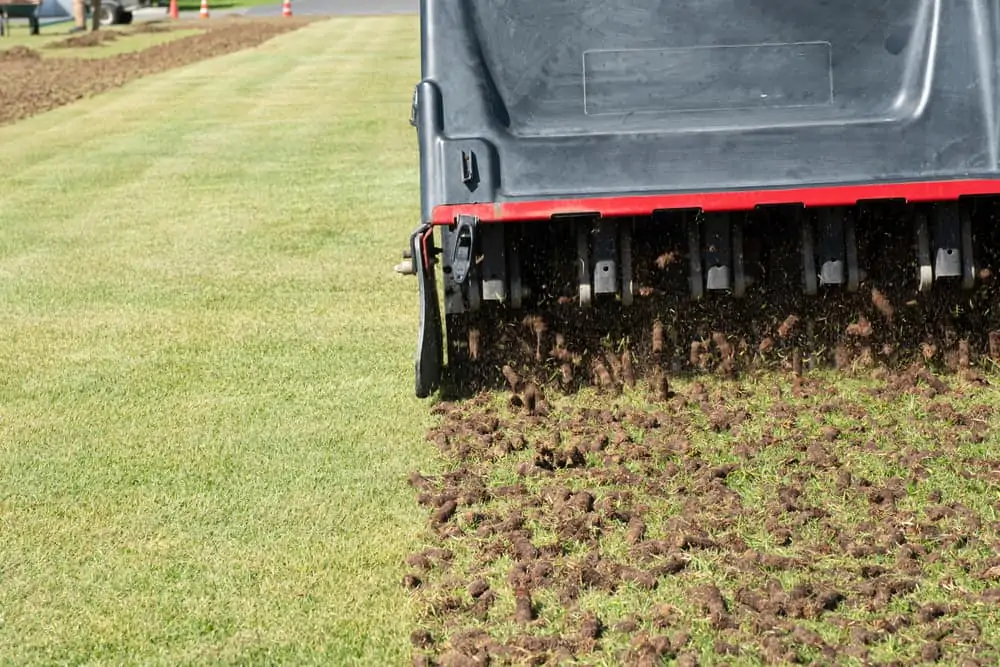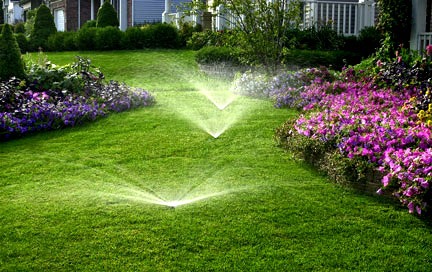Understanding the Importance of Clean Landscape Rocks
Clean landscape rocks can significantly enhance the aesthetic appeal of any garden or outdoor space. Beyond just the visual aspect, maintaining clean decorative rocks is crucial for the overall health and sustainability of your landscaping. Dirt, algae, moss, and other forms of grime not only detract from the beauty of your outdoor areas but can also harbor pests and diseases that might affect plant life surrounding these rocks.
Moreover, clean landscape rocks contribute to a more vibrant and dynamic garden environment. When rocks are covered in dirt and debris, they lose their natural color and texture, which are elements that add depth and contrast to your outdoor space. By removing dirt from garden stones, you allow these natural features to shine through, enhancing the visual appeal of your garden and making it a more inviting space for relaxation and enjoyment.
Additionally, engaging in regular landscape rock cleaning can extend the lifespan of your rocks. Over time, accumulated grime can lead to the degradation of rock surfaces, causing them to become brittle and break apart. By adopting DIY landscape rock cleaning methods and using the best cleaners for outdoor rocks, you can prevent this deterioration, ensuring that your landscape rocks remain a durable and attractive feature of your garden for years to come.
Lastly, understanding and implementing effective cleaning techniques is essential for preventing future buildup on your rocks. This not only makes maintenance easier but also ensures that your outdoor space remains a beautiful and healthy environment. Whether you’re dealing with a small garden or a large landscape area, clean landscape rocks play a pivotal role in the overall appearance and health of your outdoor space.
Step 1: Gather Your Cleaning Supplies
Embarking on the journey to rejuvenate the aesthetic appeal of your landscape rocks begins with assembling the right arsenal of cleaning supplies. This preparatory step is crucial for ensuring an efficient and effective cleaning process. The essentials include a stiff brush or broom for scrubbing, a garden hose or pressure washer for rinsing, and protective gloves to safeguard your hands during the cleaning process. Additionally, consider the type of cleaning solution best suited for your landscape rocks. For general cleaning, a mixture of water and mild dish soap can work wonders in removing surface dirt. However, for more stubborn stains or algae, you might need a specialized landscape rock cleaner available at home improvement stores. Opting for environmentally friendly cleaners is advisable to prevent harm to your garden plants and the surrounding ecosystem. It’s also beneficial to have a bucket or wheelbarrow on hand for collecting debris and a tarp for covering plants or areas you wish to protect from the cleaning solution. Gathering these supplies beforehand streamlines the cleaning process, making it more manageable and less time-consuming. Remember, the goal is not only to clean your landscape rocks but to do so in a way that maintains their integrity and enhances the overall beauty of your outdoor space. By carefully selecting and preparing your cleaning supplies, you’re setting the stage for a successful and satisfying cleaning endeavor.

Step 2: Remove Debris from the Rock Area
Before diving into the cleaning process, it’s crucial to start with a clean slate. Removing debris from the rock area not only makes the cleaning process more effective but also prevents any additional dirt from mixing with your cleaning solution later on. Begin by picking up larger pieces of debris such as leaves, twigs, and any trash that might have found its way into your garden. For smaller particles that are harder to pick up by hand, consider using a leaf blower or a soft-bristled broom. These tools can help you clear out the smaller debris without disturbing the arrangement of your landscape rocks.
Once you’ve cleared the larger debris, it’s time to focus on the smaller particles that are embedded between the rocks. A garden hose with a spray nozzle attachment can be particularly effective for this task. Set the nozzle to a strong setting and spray between the rocks to dislodge any dirt, sand, or small debris trapped in the crevices. This step is essential for preparing the rocks for a thorough cleaning, as it removes the loose dirt that could otherwise hinder the effectiveness of your cleaning solution.
It’s important to approach this step with care, especially if your landscape rocks are arranged in a specific design or pattern. Avoid using too much force when blowing or sweeping away debris, as this could disrupt the arrangement of your rocks. Similarly, when using the hose, start with a moderate pressure and adjust as needed to ensure you’re effectively removing debris without displacing the rocks. By taking the time to carefully remove debris from the rock area, you’re setting the stage for a successful cleaning process that will leave your landscape rocks looking pristine.
Step 3: Rinse Rocks with Water
Before applying any cleaning solution, it’s crucial to rinse your landscape rocks with water. This initial rinse helps to remove loose dirt, debris, and any other surface contaminants that can be easily washed away. For this step, you can use a garden hose with a spray nozzle to ensure a thorough and gentle rinse. Adjust the nozzle to a setting that provides a strong enough stream to dislodge dirt without displacing the rocks. If your landscape rocks are particularly large or if you’re dealing with a significant amount of debris, consider using a pressure washer set on a low to moderate setting. However, exercise caution with a pressure washer to avoid damaging the rocks or the surrounding landscape.
Begin by targeting the top layer of rocks, gradually working your way down and around the area to ensure that all sides of the rocks are rinsed. Pay special attention to crevices and spaces between the rocks where dirt and debris tend to accumulate. The goal of this step is to prepare the rocks for a more detailed cleaning by removing as much of the loose material as possible. This not only makes the subsequent cleaning steps more effective but also reduces the amount of scrubbing needed, thereby minimizing the risk of damaging the rocks’ surface.
After rinsing, allow the rocks to drain and assess the area. If you notice areas where dirt is still clinging to the rocks, a second rinse may be necessary. Remember, the cleaner the rocks are at this stage, the easier it will be to remove any remaining dirt or stains during the cleaning process. Rinsing your landscape rocks with water is a simple yet essential step in restoring their natural beauty and preparing them for a more thorough cleaning.

Step 4: Apply a Cleaning Solution
Once your landscape rocks are free from loose debris and have been thoroughly rinsed, it’s time to tackle any stubborn stains or build-up that water alone can’t remove. This is where a cleaning solution comes into play. However, choosing the right cleaner is crucial to avoid damaging your rocks or the surrounding plant life.
For a DIY approach, a mixture of water and white vinegar (in equal parts) can be effective for removing dirt and mildew without harsh chemicals. Simply apply the solution directly to the rocks using a spray bottle or by gently pouring it over them. For tougher stains, a solution of water and mild dish soap can also be used. It’s important to use a mild, biodegradable soap to prevent harm to your garden’s ecosystem.
There are also commercial landscape rock cleaners available, designed specifically for outdoor use. These products can be more powerful and may offer a quicker solution for heavily soiled rocks. When using any commercial cleaner, always follow the manufacturer’s instructions and take necessary precautions to protect yourself and your plants.
Regardless of the cleaning solution you choose, let it sit on the rocks for about 5-10 minutes to break down the dirt and grime. Avoid using acidic cleaners, such as bleach or ammonia, as they can erode or discolor certain types of rocks. Always test your chosen cleaner on a small, inconspicuous area first to ensure it won’t damage your landscape rocks.
Remember, the goal is to restore the natural beauty of your rocks without compromising the health of your garden. With the right cleaning solution and a gentle touch, you can achieve sparkling clean landscape rocks that enhance the overall look of your outdoor space.
Step 5: Scrub the Rocks Gently
After allowing the cleaning solution to sit and penetrate the dirt, algae, or moss on your landscape rocks, it’s time to move on to a crucial step: gentle scrubbing. This process is essential for effectively removing the stubborn grime without damaging the surface of your rocks. Start by selecting a soft-bristle brush or a sponge that is tough enough to tackle the dirt but gentle enough to preserve the integrity of the rocks. For larger rocks or boulders, you might find a scrub brush with a long handle more ergonomic and efficient.
Begin scrubbing each rock individually, paying special attention to areas with significant buildup. It’s important to use circular motions to lift the dirt effectively and to apply a consistent but gentle pressure throughout the process. If you encounter particularly stubborn spots, you may need to apply a bit more of the cleaning solution and allow it to sit for a few additional minutes before attempting to scrub again.
While scrubbing, periodically rinse the brush or sponge to prevent the spread of dirt and to ensure that you are always working with a clean tool. This step not only aids in the cleaning process but also helps in assessing your progress by removing the dislodged dirt and revealing the clean surface underneath.
Remember, the goal of this step is not only to clean the rocks but also to maintain their natural beauty and integrity. Therefore, it’s crucial to avoid using metal brushes or overly abrasive scrubbers that could scratch or damage the rocks. By following these landscape rock cleaning tips and employing gentle scrubbing techniques, you can effectively remove dirt from garden stones and maintain the pristine appearance of your outdoor space.

Rinsing and Drying Your Landscape Rocks
After diligently scrubbing your landscape rocks with the chosen cleaning solution, the next crucial step is to thoroughly rinse and dry them. This phase is essential to ensure that no cleaning solution residue remains, as it could potentially harm your garden plants or alter the pH of the soil. Begin by using a garden hose with a spray nozzle attachment to gently but effectively rinse off all the cleaning agents from the rocks. The spray nozzle allows you to adjust the water pressure, ensuring that you can remove the cleaning solution without displacing the rocks.
For larger rocks or boulders, you might need to use a bucket or a watering can to pour water over the surfaces to ensure all soap is rinsed away. It’s important to be thorough during this process to prevent any chemicals from seeping into the soil. Once rinsing is complete, the next step is to let the rocks dry. Sunlight is your best ally in drying your landscape rocks. If possible, conduct your cleaning project on a sunny day to take advantage of the natural drying power of the sun. Spread the rocks out in a single layer, if feasible, to maximize exposure to sunlight and air circulation, which will speed up the drying process.
For those in less sunny climates or tackling this project during cloudier seasons, consider using a leaf blower to remove excess water from the rocks after rinsing. This method can significantly speed up the drying process, although it might not be as effective as direct sunlight. Once your landscape rocks are dry, you can return them to their original position, or take this opportunity to rearrange them for a refreshed look. Proper rinsing and drying are pivotal in maintaining the pristine condition of your landscape rocks, ensuring they continue to enhance the beauty of your outdoor space.
Preventing Future Buildup on Your Rocks
Maintaining the pristine condition of your landscape rocks doesn’t just stop after a thorough cleaning. Preventing future buildup of dirt, algae, and moss is crucial to ensure your outdoor space remains appealing with minimal effort. Here are some effective strategies to keep your landscape rocks looking their best.
Firstly, consider the positioning of your rocks. Ensure they are placed in areas where they can dry quickly after rain, as moisture is a breeding ground for algae and moss. If possible, rearrange your landscape to avoid shaded areas that remain damp for extended periods.
Secondly, regular maintenance is key. Gently sweeping or blowing leaves and debris off your rocks can prevent organic material from decomposing on them, which can lead to dirt buildup and encourage the growth of unwanted organisms. Incorporating this into your routine garden maintenance can save you time and effort in the long run.
Another effective method is to apply a preventative solution. There are commercial products available designed to inhibit the growth of algae and moss on outdoor surfaces. Alternatively, a mild bleach solution (always diluted to the manufacturer’s recommendations) can be used sparingly. However, it’s important to consider the surrounding plant life and materials before applying any chemical solutions to your landscape rocks.
Lastly, consider using landscaping fabric under your rocks if you’re starting a new project or are willing to redo the area. This fabric acts as a barrier, preventing dirt and seeds from reaching the surface of your rocks, thus reducing the chances of weed growth and soil buildup.
By implementing these preventive measures, you can significantly reduce the frequency and effort required to clean your landscape rocks, ensuring they remain an attractive feature of your outdoor space.
The Do’s and Don’ts of Rock Cleaning
Cleaning landscape rocks might seem straightforward, but there are certain do’s and don’ts that can make a significant difference in the outcome. To ensure you’re not only effectively removing dirt and grime but also preserving the integrity and beauty of your garden stones, here are some essential tips to follow.
Do:
1. Test cleaning solutions on a small area first: Before applying any cleaner over all your rocks, test it on a small, inconspicuous area. This step ensures that the solution won’t discolor or damage your rocks.
2. Use a soft brush for scrubbing: To avoid scratching or damaging the surface of your landscape rocks, always use a soft-bristled brush for scrubbing.
3. Rinse thoroughly: After applying any cleaning solution, make sure to rinse the rocks thoroughly with water. This prevents any chemical residues from damaging the rocks or affecting nearby plant life.
4. Regular maintenance: Regularly removing debris and lightly cleaning your rocks can prevent the buildup of dirt and grime, making deep cleaning sessions less frequent and less labor-intensive.
Don’t:
1. Use harsh chemicals: Avoid using harsh chemicals that can erode or discolor your rocks. Opt for gentle, natural cleaners or those specifically designed for landscape rocks.
2. Pressure wash with high intensity: While pressure washing can be effective, using too high of a setting can damage the rocks or even blast them away from their desired location. Always start with the lowest setting.
3. Ignore safety: When using any cleaning solutions, wear appropriate safety gear like gloves and goggles to protect yourself from potential harm.
4. Forget about the surrounding area: Be mindful of the plants and grass around your landscape rocks. Ensure that any runoff from cleaning doesn’t harm your garden’s ecosystem.
By adhering to these do’s and don’ts, you can maintain the beauty and integrity of your landscape rocks while ensuring they complement your outdoor space for years to come.
Maintaining the Beauty of Your Landscape Rocks
Maintaining the beauty of your landscape rocks doesn’t have to be a daunting task. With regular care and the right approach, you can ensure your garden stones remain as captivating as the day you laid them. The key to preserving their aesthetic appeal lies in routine cleaning and preventive measures.
Firstly, make it a habit to inspect your landscape rocks periodically. Look out for early signs of moss, algae, or dirt accumulation. Early detection makes cleaning easier and prevents the need for harsh chemicals or vigorous scrubbing that could damage the rocks. Implementing a simple brushing off of debris and leaves every few weeks can significantly reduce buildup.
Secondly, consider the positioning of your rocks. Ensure they are placed in a way that allows for proper drainage. Stagnant water is a breeding ground for algae and can lead to dirt accumulation. If possible, rearrange your rocks to avoid water pooling.
Another effective strategy is to use landscaping fabric underneath your rocks. This barrier not only discourages weed growth but also minimizes the amount of soil that ends up on your rocks, keeping them cleaner for longer.
For ongoing maintenance, a gentle rinse with a hose every few months can help remove dust and small debris. During this routine wash, avoid using high pressure, which can displace smaller rocks or erode the surface of softer stones.
Lastly, embrace the natural beauty of your landscape rocks. While cleanliness is important, slight variations in color or texture due to weathering can add character and depth to your garden. By following these simple maintenance tips and embracing the natural aging process, you can ensure your landscape rocks remain a beautiful and integral part of your outdoor space.
